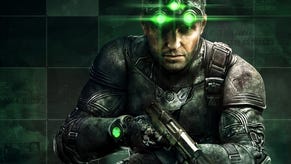Splinter Cell: Conviction demo analysis
Extraordinary rendition?
Much delayed with rumours of massive re-tooling work behind the scenes, Splinter Cell: Conviction is finally in the last furlong of development and Ubisoft released a playable demo on Xbox Live just a few days ago.
Similar to BioShock and its sequel, Conviction is running using elements of Unreal Engine technology, but it's not the most recent UE3 iteration. Way back when, Ubisoft took an older version of the code and redeveloped it extensively for use in Splinter Cell: Chaos Theory. Rather than migrate to UE3 and re-engineer that, the team instead decided to build new technologies on top of its original code, resulting in the so-called LEAD engine that is the basis for Splinter Cell: Conviction.
If you're interested in the game's renderer and the initial design decisions in what has been a mammoth five-year project, this GDC 2010 presentation from Ubisoft Montreal's Stephen Hill is well worth a few moments of your time.
In it Hill discusses the challenges in moving across from the old technology to the new and describes the tent-pole elements of the new renderer. Every light source in the environment is fully dynamic and can be activated or deactivated, and Ubisoft Montreal has developed its own system of dynamic ambient occlusion.
More recent innovations like SSAO (screen-space ambient occlusion) weren't around when Conviction started its own development cycle, so the team developed its own dynamic iteration. There are some overlaps conceptually with SSAO, but the new approach gives more flexibility to the artists and according to Hill's figures, it's a very fast performer too.
Onto the performance analysis of the available demo code and what we see is a fairly solid run of play from the demo. Frame-rate is fairly consistent in 30FPS territory, with the regular spectre of screen-tear when the engine is under load. Probably the most noticeable example is in the initial cinematic. As there is not so much lateral movement it manifests more as a slight "wobble" as opposed to the phenomenon at its worst.
Overall image quality is bolstered with good shadowmap quality and no noticeable cascade issues, and texture filtering is good too no shimmering textures, showing an accomplished anisoptropic/trilinear combination.
In the final analysis, around 12 per cent of this test resulted in torn frames, but often it is difficult to notice. In the demo at least, there is little in the way of fast motion, no sudden panning motions and no high contrast colour schemes that would show off the phenomenon more immediately, which brings us on to how basic image composition and deft touches by the developer can visually mitigate the sorts of stats that frame-rate analysis throws up.
The demo has had some plaudits for the clarity of its image quality, but in actual fact the game runs at 1024x576, with just 2x multisampling anti-aliasing (MSAA). This compares with native 720p for the last Double Agent offering (with an edge blur to simulate AA).
The stats for Conviction aren't hugely impressive, but the game is still attractive. Having much of the demo in darkness and with low contrast edges and no overuse of specular helps to keep the more obvious side-effects of going sub-HD less apparent, so in a sense the art direction itself helps.
Alongside that, effects added by the developer work well - a well-realised depth-of-field literally takes close-range shapes that would be prone to showing off badly scaled edges and smoothes them off in a realistic fashion.
The demo is short but sweet, and technologically speaking it looks like being an interesting game. Those looking for a platform exclusive which showcases the strengths of the host console in an Uncharted 2 or God of War III kind of way are going to be disappointed. But Conviction appears to be a release where its charms aren't immediately in your face.
Take the AI for instance: choose a restart point within the demo and check out your opponents' behaviour. These enemies aren't predictable: their exact responses change even when you adopt similar strategies against them. Other more visually apparent technologies, such as the way light and shadow are handled, are all closely entwined with the core gameplay, and while this is showcased to an extent in the demo, it appears Ubisoft Montreal has more tricks up its collective sleeve than are revealed in the sampler.
The developer has talked about Sam Fisher interacting in crowd-based levels, along with level crammed with a ton of individual items and there's also been some discussion about destructible environments, but none of this is seen in the demo. Roll on final review code.
Splinter Cell: Conviction is due out for Xbox 360 on 16th April and PC on 30th April.






